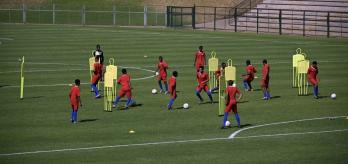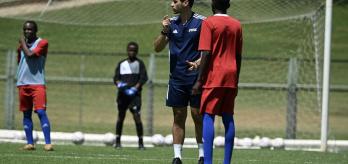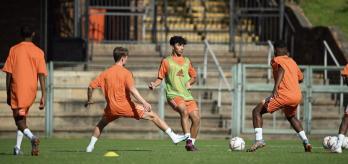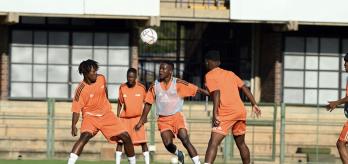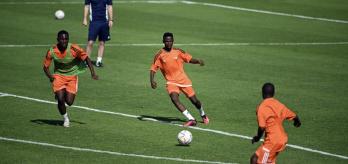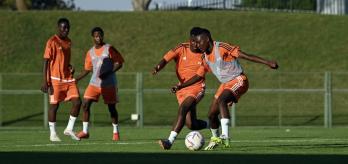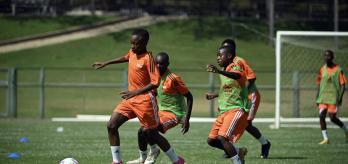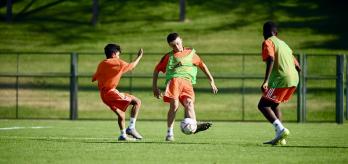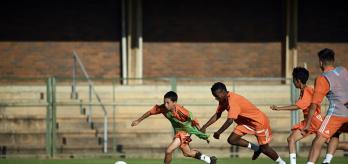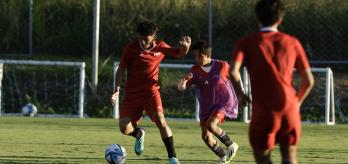Methodology
The intention: What is practised?
The primary objective of this game is to enhance a team’s ability to effectively build up and progress the ball against a high defensive block. This practice allows teams to concentrate on their collective shape and coordination in order to initiate play from the back, advance the ball, and create scoring opportunities by bypassing the first line of defense.When not in possession, the focus shifts to preventing the opponent from playing forward and identifying opportunities to press and regain possession. The coaching emphasis lies in strategically positioning players as a cohesive unit, creating width and depth to stretch the opposition, and facilitating connectivity between central players by offering passing options between the lines. Out of possession, teams prioritize their defensive shape, with a focus on compactness and a ball-oriented defensive structure.
The scale: For whom is this relevant?
The primary focus of this practice is on the team structure and the different lines involved in the build-up and ball progression. During the build-up phase, the goalkeeper, center-backs, and center-midfielders collaborate to break through the opposition's initial pressing line. The wide players and forwards are then tasked with exposing the space vacated by the opposition, progressing play and creating chances. The nature of the exercise enables the players to practise the specific requirements of their respective positions when playing out from the back. As for the pressing team, they should look to operate in a high block, with the front two players pressing the opposition’s center-backs and the cover players (midfielders and defenders) being prepared to step out and prevent the opposition from progressing play
The practice type: How is the practice designed?
This practice session is designed as an opposed team game on a reduced field, with a primary focus on building play from the back against a high-pressing opponent. To create this scenario, the team without possession is instructed to defend with a high block, using a 2-3-2 formation. Additionally, the offside rule is implemented to allow the defending team to push up and apply intense pressure. When in possession, teams adopt a 2-3-3 formation, utilizing a neutral player to create a numerical advantage in the central area of the field, making it slightly easier to progress play through the center.
Session plan
Organisation
-
Mark out a 20x50m exercise area.
-
Position a full-size goal at each end of the exercise area.
-
Place a goalkeeper in each goal.
-
Mark out an offside line 20m from each goal.
-
Set up 7 blue players v. 7 orange players, plus 1 green player (neutral).
Explanation
-
The exercise starts with either goalkeeper in possession.
-
The in-possession team’s objective is to build up play and score in the opposing goal.
-
The neutral player plays for the in-possession team.
-
The in-possession team set up in a 2-3-3 formation, with the 2 wide players operating as both full-backs and wingers.
-
The out-of-possession team set up in a narrow 2-3-2 formation.
-
The offside rule applies.
-
The out-of-possession team press high and push up to the offside line.
-
Each time a goal is scored, play restarts with the goalkeeper of the team that scored.
-
Allow the players to play for 2 minutes, before coaching for 2 minutes and then play for a further 5 minutes. Repeat this sequence several times.
Key coaching points
Roles of coaches
-
First coach: leads the session and organises the players as a unit, whilst reminding them of the actions they need to perform when receiving between the lines.
-
Second coach: focuses on coaching the defensive unit and repositioning the players to enable them to close down quickly.
-
Third coach: encourages the players from a position on the opposite side of the exercise area and introduces balls into play to encourage quick restarts.




























